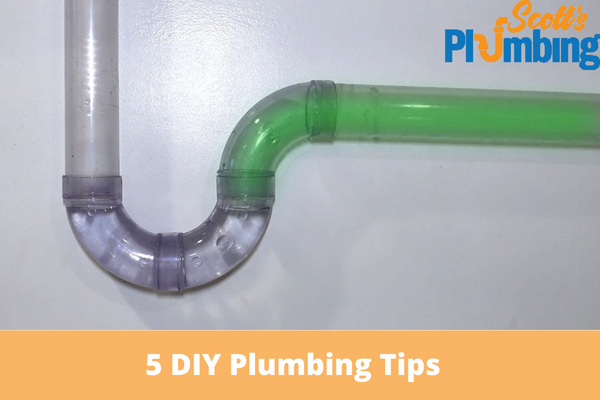Inconvenient problems with the plumbing are the worst. Leaky faucets, non-functioning toilets, and clogged drains can all put a damper on your day and even cause serious structural damage to your home if you don’t take care of them immediately. Some DIY plumbing knowledge is useful for homeowners.
Although you should get a professional plumber for major work, it’s helpful to know the basics to fix minor leaks and drips.
Learn How to Unclog a Toilet
A clogged toilet is a common and annoying plumbing problem, so keep a plunger nearby. Most clogs should be cleared by the pressure created when plunging, but if it doesn’t work, try pouring some hot water into the bowl to help dislodge the obstruction.
Most severe clogs require a plumbing snake, a metal coil that “snakes” down the pipe to release the obstruction. Before employing a snake, mix baking soda and vinegar in water, but avoid harsh chemical drain cleaners.
Inspect for Leaks
Refrain from assuming everything is in working order after installing a new fixture or performing a plumbing repair. Even though the connections appear secure, they could leak and cause water damage, which can become severe if not caught soon. Always switch on the water supply and wait a few minutes to observe whether there are any immediate leaks.
For several weeks, keep an eye on the connections where you completed your plumbing installation or repair. Leaks usually take time to occur.
Have a Plumbing Kit
Maintain a plumbing kit in your bathroom or garage. A plunger, plumber‘s tape to seal leaks, paper towels and old towels in case of a leak, pliers, and a screwdriver or hex keys should all be included. To tighten small nuts and bolts, hex keys are required. They come in several sizes, and a set is fairly affordable.
You’ll be pleased you gathered these items ahead of time the next time you have a plumbing emergency!
Clean a Shower Head
If you notice a lack of water pressure in your shower, it may be time to clean out the showerhead. Pour vinegar into a plastic bag first, then slide it over the shower head and secure it with a rubber band so that all openings are entirely covered by liquid. Allow sitting overnight so all soap scum can dissolve away.
The issue may persist at times. In such a case, you’ll need to wipe out mineral deposits that have clogged the jets with toothpicks.
Find the Shutoff Valves
Locate your home’s plumbing shutdown valves before touching any pipes or fixtures. The main water valve, where the water supply enters the house, has a shutdown option that stops the water supply to the entire home. This valve may be in your basement, or the pipe may enter the house. An external shutdown valve may be on your property’s outer wall or underground box.
Final Thoughts
Learning plumbing basics is simple. Be sure to educate yourself about routine tasks that can help keep things running smoothly and save on repair bills.
Call a professional if you’re feeling overwhelmed or unsure how to proceed. At Scott’s Plumbing, we can help you find the right and best solution for your plumbing issues, whether a quick fix or a complete overhaul of your plumbing system. We’re here to help, so don’t hesitate to call us!



